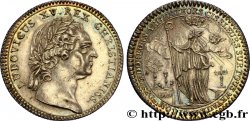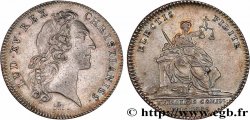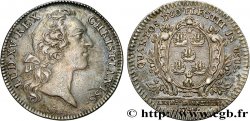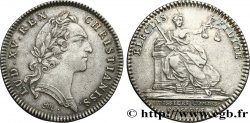fjt_014069 - CORPORATIONS Jean LE CONTE, poissonnier de mer, échevin 1595
Not available.
Item sold on our e-shop (2019)
Price : 140.00 €
Item sold on our e-shop (2019)
Price : 140.00 €
Type : Jean LE CONTE, poissonnier de mer, échevin
Date: 1595
Metal : brass
Diameter : 27,5 mm
Orientation dies : 6 h.
Edge : lisse
Rarity : R2
Catalogue references :
Obverse
Obverse legend : I LE CONTE ESCHEVIN ET BOVRGOYS DE PARIS.
Obverse description : Armes de Jean Le Conte. 15 - 95.
Reverse
Reverse legend : SIC HENRICVS MERGENTIBVS ; À L'EXERGUE : 1595.
Reverse description : Flammes au-dessus d'un navire.
Reverse translation : Comme Henri, elle l'engloutit.
Commentary
Jean LE CONTE, décédé le 3 avril 1613 à 72 ans, inhumé chapelle de Monsieur de Montauglan, St Nicolas des Champs, vendeur de marée alias vendeur de poisson de mer, fut échevin de Paris en 1578, 1587 et 1594, demeurant rue Saint-Martin en 1607. Il épousa Catherine DES MARETS qui décéda le 16 février 1604 à 61 an ; cette biographie provient de http://www.famillesparisiennes.org/public/jlm/j17ccastagnere.html#LECO .
On doit noter que là encore c’est un marchand de poisson de mer et certainement un membre important de cette corporation qui accède aux fonctions d’échevin.
Notons que si les flammes autour du mat sont très probablement des feux de Saint Elme, la légende de revers est énigmatique.
On doit noter que là encore c’est un marchand de poisson de mer et certainement un membre important de cette corporation qui accède aux fonctions d’échevin.
Notons que si les flammes autour du mat sont très probablement des feux de Saint Elme, la légende de revers est énigmatique.








 Report a mistake
Report a mistake Print the page
Print the page Share my selection
Share my selection Ask a question
Ask a question Consign / sell
Consign / sell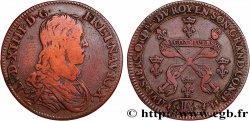
 Full data
Full data